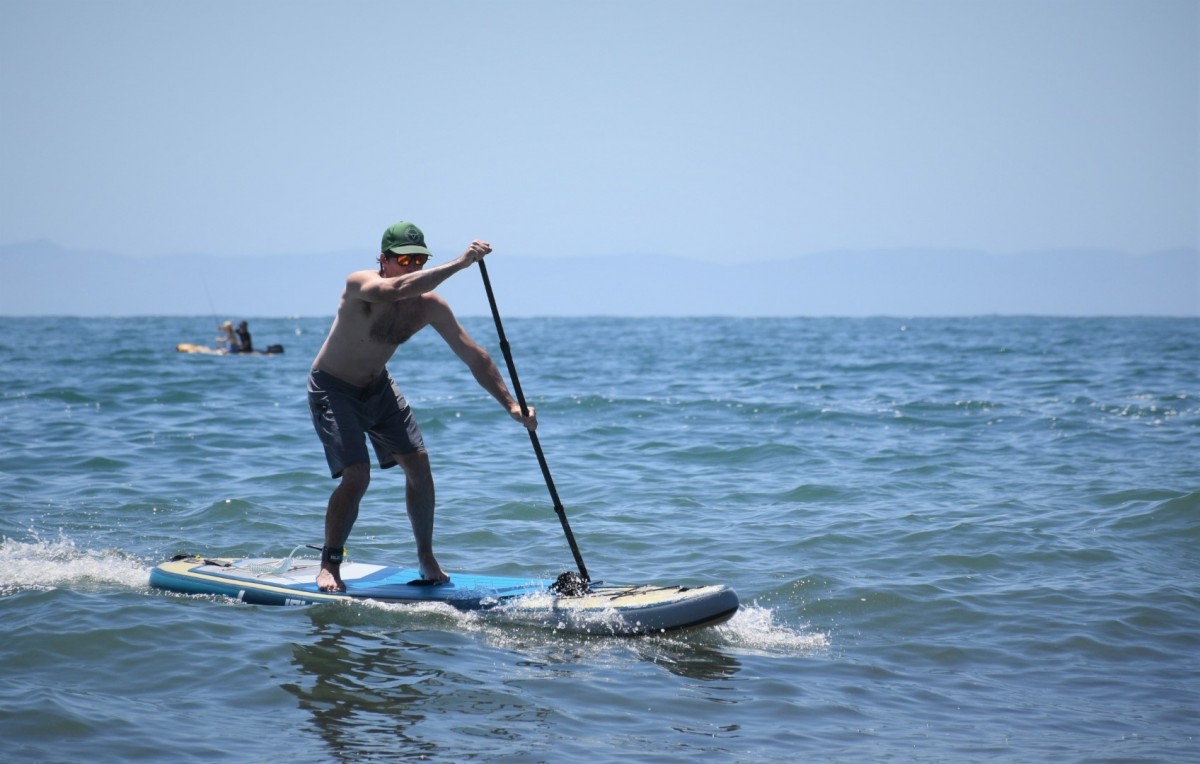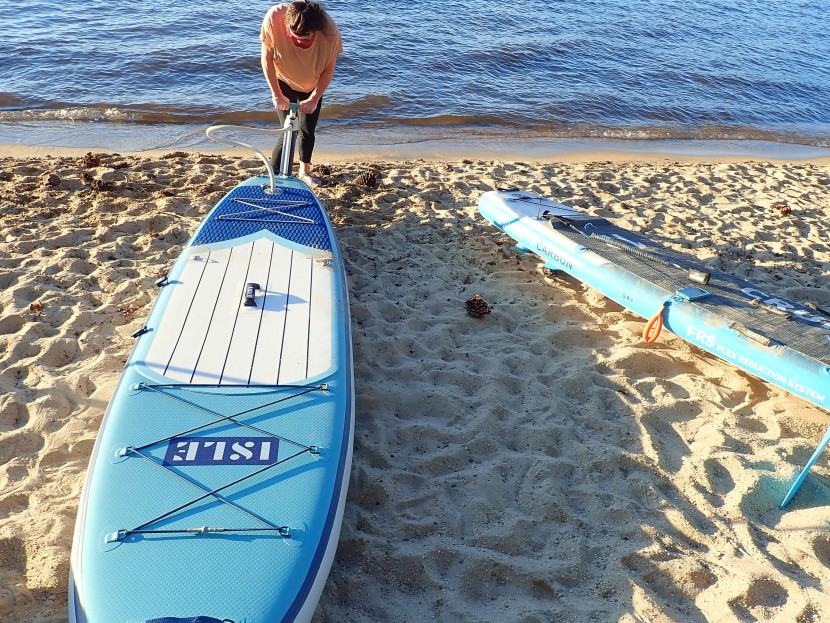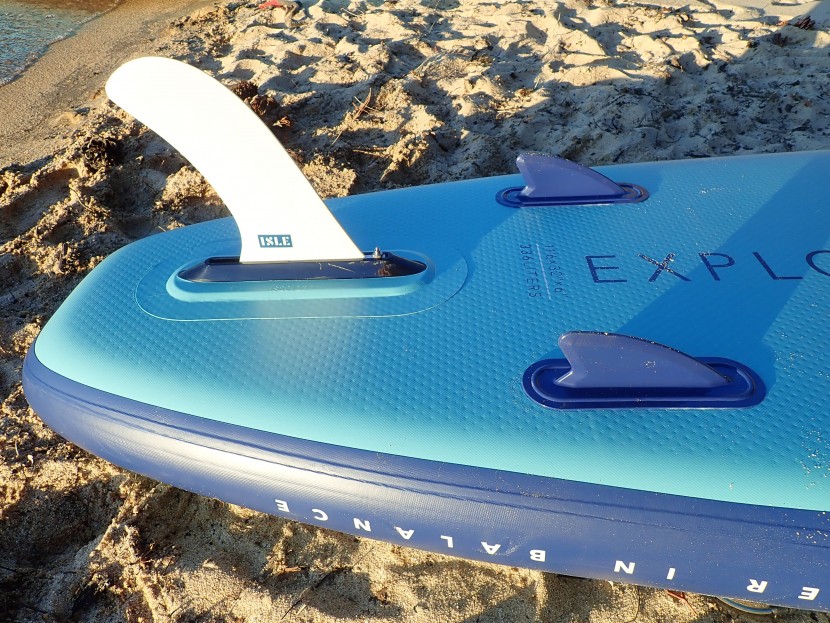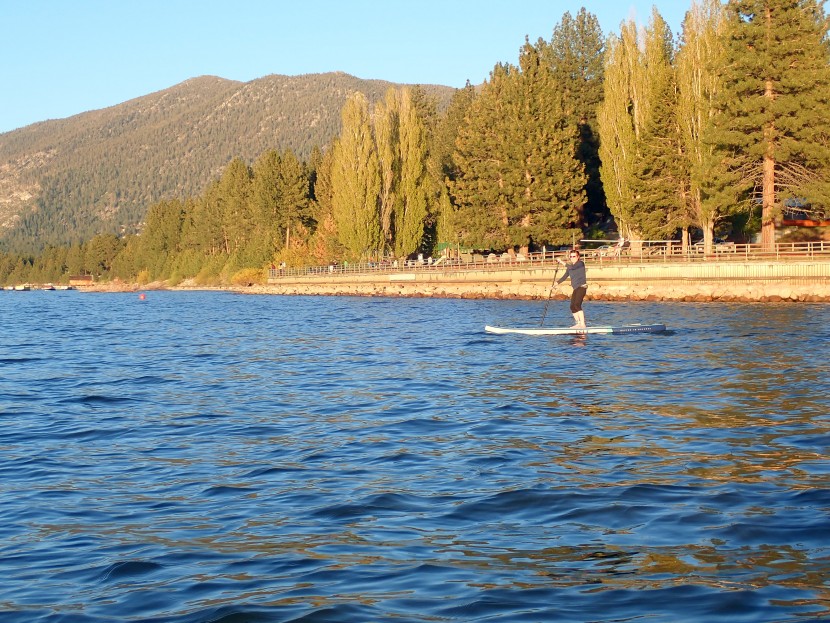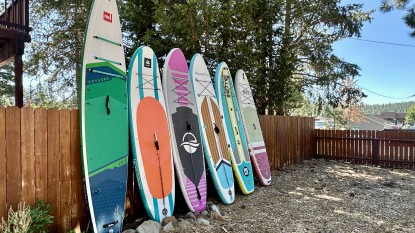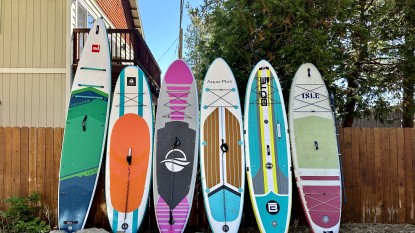Our Verdict
Our Analysis and Test Results
Since we tested this board, Isle has updated it to the Explorer 2.0. A representative for Isle told us that the main difference between the boards is that the 2.0 features attachment points for a kayak seat, which is sold separately.
The Isle Explorer is well-loved among our testers because it's stable, easy to paddle, lightweight, and has tons of cargo space. It combines dependable all-around performance with higher-end materials and construction but still comes in at a reasonable price compared to the higher-end competitors.
Stability
The Explorer performs admirably in this metric thanks to its hefty yet surprisingly lightweight dimensions. At 11.5 feet long, 32 inches wide, and 6 inches thick, this board provides plenty of width and volume to withstand choppy conditions. A triple-fin setup also helps improve stability while maintaining its ability to glide. This offers user-friendly stability for all levels of paddlers, including beginners, without hindering performance capabilities for more advanced paddlers.
Interestingly, the large storage capacity of the Explorer (which we love) with front and rear bungee systems can potentially get in the way of its stability. The board's stability will suffer if you add larger loads but don't balance them properly. The Explorer is plenty capable of hauling heavier loads, but remember to evenly balance and secure everything before launching.
Glide Performance
This SUP scores well in our glide rating metric, but it isn't quite at the top of the class. Because of the low weight, the Explorer can skim the water well, but its slightly bulkier profile makes it slightly slower than some of the sleekest boards in our review. During mellow paddle sessions with friends in normal conditions, the Explorer can keep up just fine. When the water gets choppier or the intended pace increases, longer and thinner boards excel.
The Explorer features two hard, smaller side fins with one larger removable middle fin. Most of our testers approve of this setup, which is commonly seen on other boards. The center fin attaches using a small square screw. Be sure to keep it attached to the board or fin, as it can be easily lost in the sand. This configuration of fins balances stability and glide performance on open water but still allows for some stability in shallow water if you need to remove the larger fin for safety. A drawback to this design is that the built-in fins do not allow the board to be rolled up as tightly as we'd like, but it still packs down compactly enough.
Maneuverability
The profile and fairly wide dimensions land the Explorer its lowest score in this metric. While it is maneuverable enough for general paddling in most conditions, other boards that are slightly shorter, narrower, more aggressively rockered, or include stomp pads can outmaneuver this vessel. We also found that it became more difficult to manage in windy conditions.
Ease of Use
The Explorer is easy to transport with a very comfortable middle carrying handle that allowed our testers to tackle a rowdy portage through scrub and mud. Plus, additional front and rear grab handles mean two people can tag-team the carry. The overall lightweight construction won't tire you out too quickly, and we love that there are velcro attachments to strap the paddle to the side of the board.
With the included backpack, the Explorer easily rolls up and packs away with plenty of extra room for snacks and a towel. The pack is well-padded and has enough room for the included pump, fin, leash, and paddle. The front of the bag does not unzip all the way to the corner requiring a little extra attention when unpacking and repacking, but the side carry handle is helpful when moving the bag in and out of vehicles.
The stock pump included with your Explorer purchase is very similar to most, with the addition of the color orange to designate the ideal inflation zone. The pump has two different potential attachment points. One is for inflation, and the other is for deflation. Be sure to take a close look before attaching the pump hose.
Construction Quality
The Explorer* is an impressively well-made board. It is constructed with thick, single-layer PVC and a welded “Powerfuse” inner rail. It has an extra-large cargo system with six D-rings in the front, four D-rings in the back, two sturdy handle straps on the nose and tail, and a sturdy middle strap. The stock adjustable three-piece paddle that is included in the package has a hybrid design with a carbon fiber shaft and a nylon blade. It's one of the best paddles included in any of the SUP packages that we tested.
Should You Buy the Isle Explorer?
This board is not the least expensive in the test, but it's often available well below its list price, and it boasts exceptional overall performance and high-quality materials and construction. It also comes with a pump, fin, patch kit, SUP leash, paddle, and backpack. We tried to beat this board up, but it handled everything we threw at it with grace.
What Other Inflatable SUPs Should You Consider?
The Isle Explorer is a well-loved SUP among our testers with excellent construction and versatility. That said, if you want to paddle in places that require deft maneuverability, there are better options. The Red Paddle Co Voyager+ MSL is our favorite touring board, and the Bluefin Cruise Carbon feels like you're on a rigid SUP. Our overall favorite board — which is also very nicely priced — is the Bote Breeze Aero, and the Funwater 11 is top dog if your funds are super tight.


